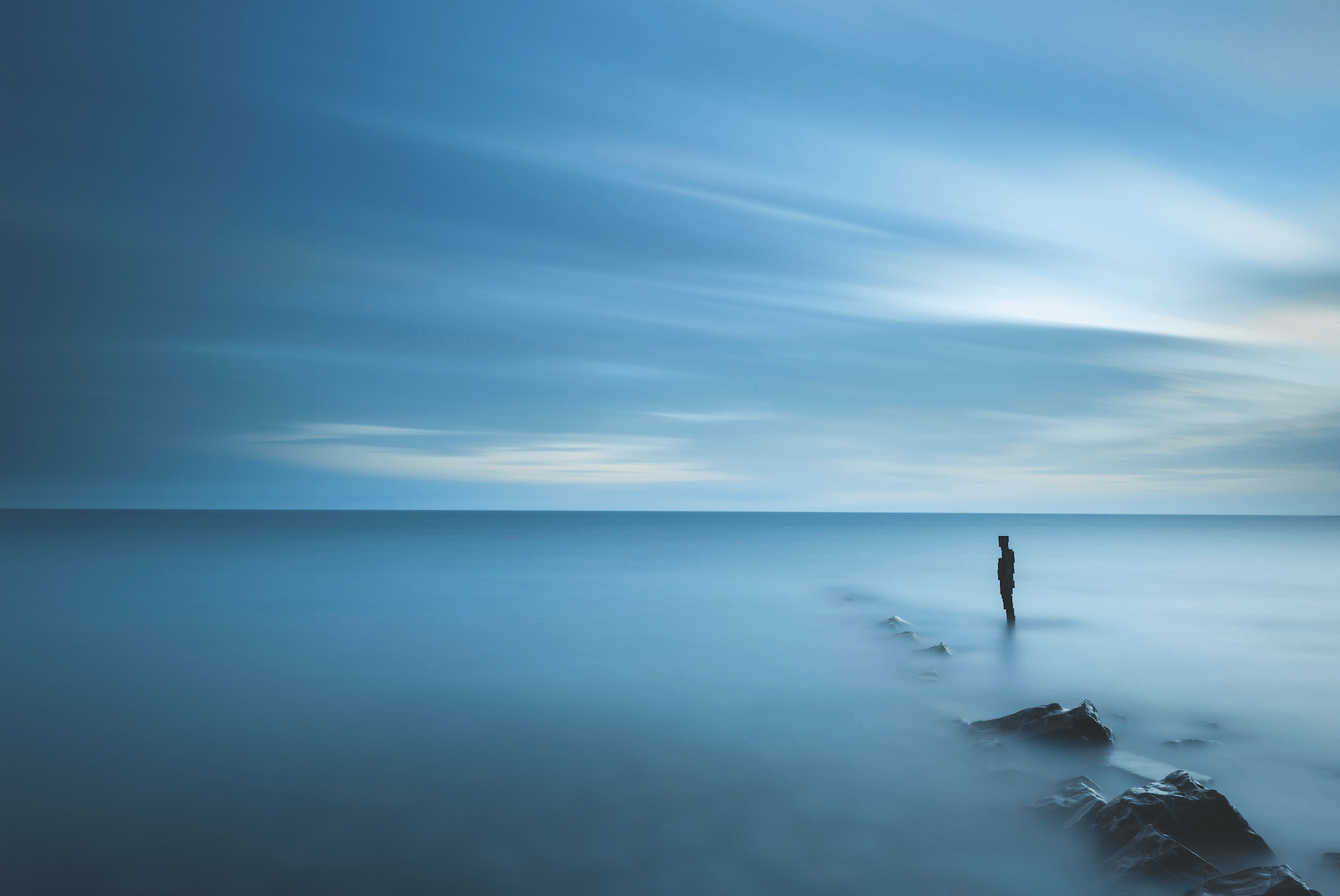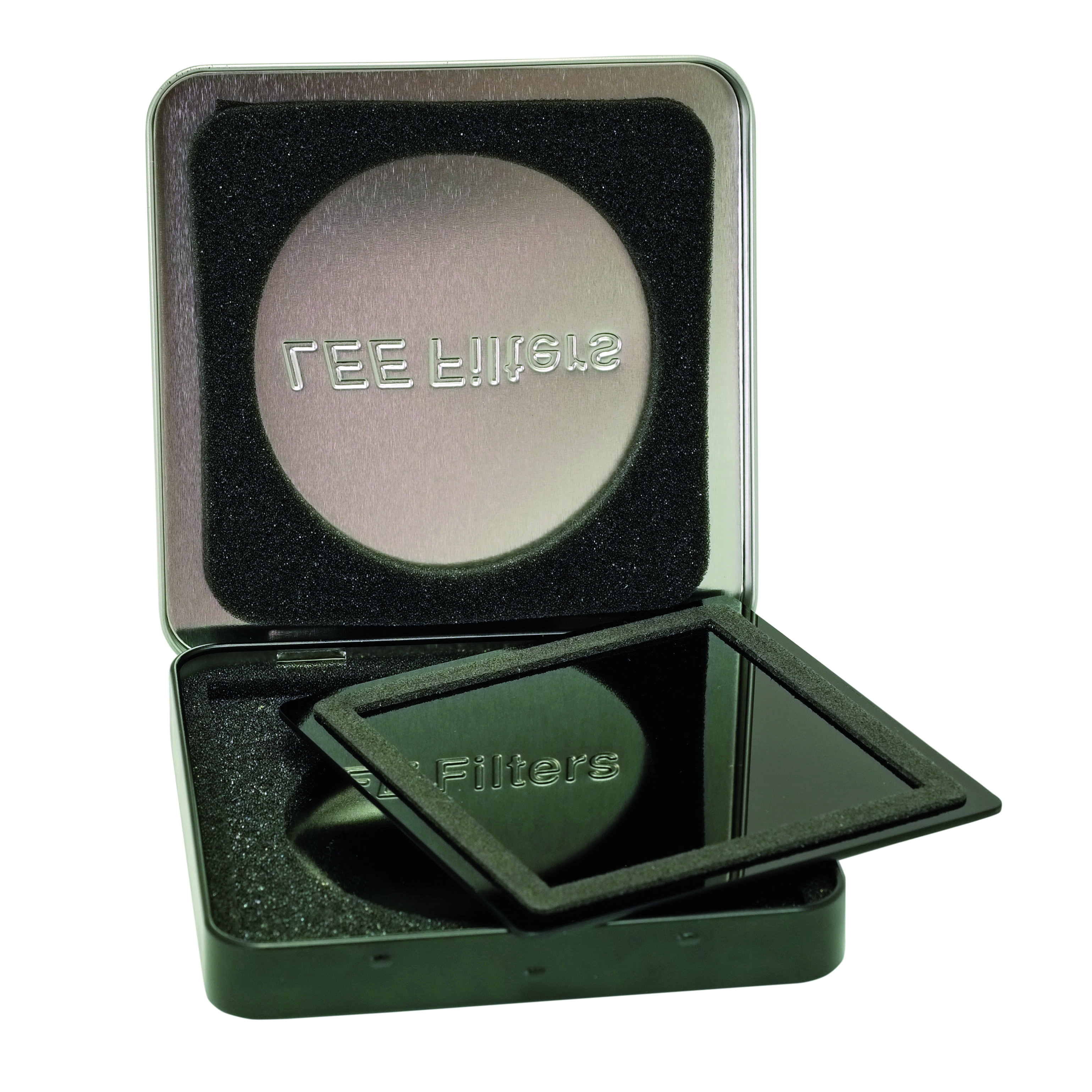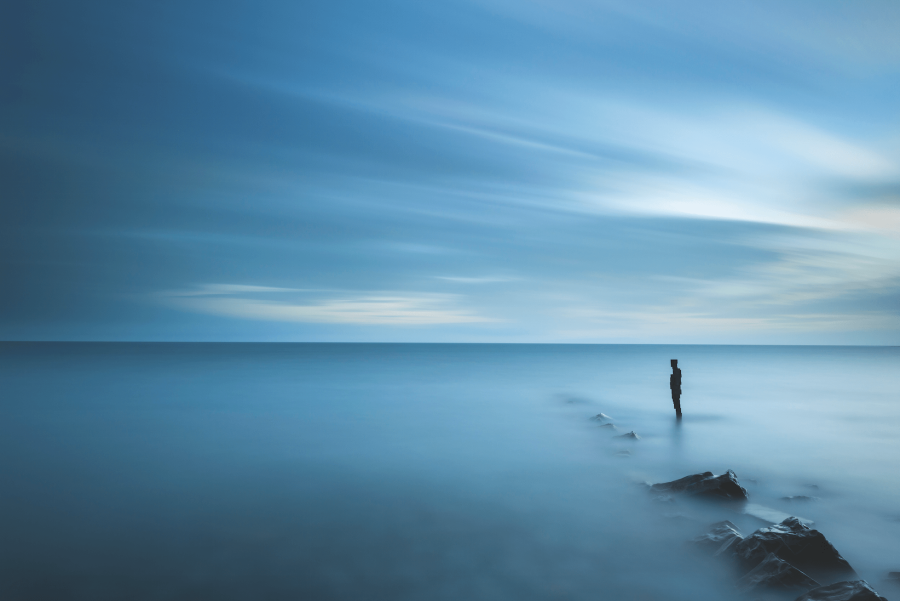
A classic long-exposure image, showing flat, milky sea, wispy clouds and the characteristic blue cast of a Stopper filter. Nikon D3X, 14-24mm f/2.8 at 24mm, eight minutes at f/11, ISO 100, 0.6 ND hard grad, Super Stopper, blue colour cast uncorrected. Credit: Jeremy Walker
Now in its 50th year, Lee Filters is the world’s leading manufacturer of professional-quality light-control filters. The Andover-based company’s filters are used not only in photography, but also in motion picture and television productions, theatrical and live stage events, and architectural and themed entertainments.
Within the world of stills photography, Lee Filters has probably been best known for its graduated filters, which enable photographers to balance the exposure of a bright sky with that for the land. However, over the past few years, the Stopper range of filters, which are used to extend exposure time, have become extremely popular. And now a new range of ProGlass IRND neutral-density filters has been launched. So what’s the difference between them?
The Stopper range
Lee Filters Stopper filters have been designed to enable photographers to extend exposure times. This has the effect of causing anything that is moving within the frame to become blurred in the final image. It’s a popular effect in both seascape and landscape photography, where choppy water is made smooth and clouds or waterfalls are transformed into silky streaks.
There are three strengths of Stopper filter available: the Little Stopper, which extends exposure
by six stops; the Big Stopper, which brings a 10-stop extension; and the 15-stop Super Stopper.
The dark appearance of the Stoppers is created by adding dye to the glass when it’s still liquid, so the colour is mixed throughout the filter. In addition to the black dye, there’s also a hint of blue, as this helps deal with infrared (IR) pollution, which is a particular issue with long exposures and can make blacks appear brown. It’s tricky to correct IR pollution issues, but adding blue turns it into a white balance shift, which is much easier to address post-capture. Over the years, many photographers have come to love the blue note of unadjusted Stopper images.
“Long exposures have the effect of causing anything that is moving to become blurred”
Because of the blue tone, Lee Filters doesn’t refer to the Stopper Range as being neutral-density (ND) filters – they’re called Stoppers because they stop light from entering the lens.
One interesting effect that has also proved popular with the Stopper range is the slight vignette that is created with wideangle lenses. This happens because light at the edges of a wideangle frame enters the filter at a more acute angle then it does with longer lenses, and thus it has to travel through more of the filter. This means more light is cut out.

All Stopper filters have a foam seal to prevent light leaks from spoiling the image
ProGlass IRND filters
Lee Filters developed ProGlass IRND filters many years ago in response to a request from its parent company, Panavision – a movie camera business. Panavision recognised that infrared pollution was causing problems with ND filter use in the movie industry, and that many hours of grading were being spent purely trying to correct for different levels of pollution effect. The solution was for Lee Filters to produce a neutral filter that also cut out infrared light and it has quickly become the number one filter in the film industry. Now, Lee Filters has made this filter available to stills photographers who want a more neutral result than is possible straight from the camera with the Stopper range.
One of the key differences between the Stopper range and the ProGlass IRND filters is that ProGlass filters have a surface coating and there’s no dye mixed through the glass. This is a more expensive process, but it means that the filter doesn’t cause vignetting with wideangle lenses.
Lee Filters ProGlass IRND filters have a protective coating, but they should be treated with care to avoid damaging the neutral-density layer.







